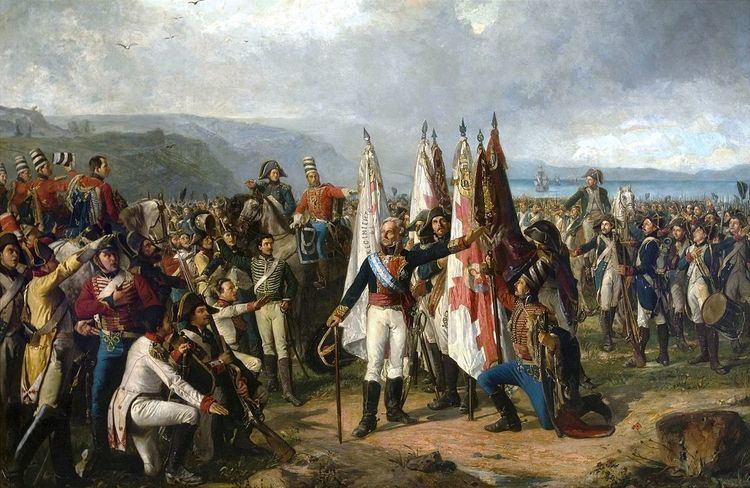Name HDMS Søormen Name HMS Salorman | Captured 11 August 1808 Launched 13 November 1789 | |
 | ||
Builder Stibolt, Bodenhofs plads Acquired 11 August 1808 (by capture) Fate foundered 23 December 1809 | ||
HMS Salorman was the Danish cutter Søormen, of twelve guns, built in 1789, which the British captured in 1808. She was wrecked in 1809.
Contents
Danish origins
Søormen was built in Copenhagen to a design by Ernst Stibolt. She was launched on 13 November 1789.
Søormen was designated as a mail boat [hence the Danish "kongensbåd" or "kongenjagt" -king’s boat or king’s sloop – in the record], and armed for self-defence. Until August 1808 the Danes considered such vessels non-combatants. Captain Trampe, in command of a sister ship (Ørnen) in the postal service based in Korsør, was reprimanded for putting his ship in harms way when he captured a British barge in the Great Belt later that month. However, Frederick VI of Denmark later approved Trampe's action.
Capture
When word of the uprising of the Spanish against the French in 1808 reached Denmark, some 12,000 Spanish troops of the Division of the North stationed in Denmark and under the Marquis de la Romana decided that they wished to leave French service and return to Spain. The Marquis contacted Rear-Admiral Keats, on Superb, who was in command of a small British squadron in the Kattegat. They agreed a plan and on 9 August 1808 the Spaniards seized the fort and town of Nyborg. Keats then prepared to take possession of the port and to organize the departure of the Spanish. Keats informed the Danish authorities that if they did not impede the operation he would spare the town. The Danes agreed, except for the captains of two small Danish warships in the harbour.
On 11 August Keats sent in the boats from Edgar, under the command of her captain, James Macnamara. The boats captured the brig Fama, of 18 guns and under the command of Otto Frederick Rasch, and the cutter Søormen, of 12 guns and under the command of Thøger Emil Rosenørn. Despite the odds Rasch and Rosenørn refused and put up a stiff resistance before they struck. British losses were an officer killed and two men wounded; the Danes lost seven men killed and 13 wounded. In 1847 the Admiralty authorized the issue of the Naval General Service Medal with clasp "11 Aug. Boat Service 1808" to all surviving claimants of the action.
The British organized the evacuation of the Spanish troops using some 50 or so local boats. Some 10,000 troops returned to Spain via Britain.
The British commissioned the cutter under the name Salorman and appointed Lieutenant Andrew Duncan to command her.
Fate
On 22 December 1808, Salorman was part of the escort of the last British convoy of the year leaving the Baltic. She was in company with four other British warships - the frigate Salsette, the brig-sloop Fama, the brig-sloop Magnet, and the gun-brig Urgent - three Swedish naval vessels and twelve merchant vessels. Unfortunately, the convoy left after an unusually severe winter had set in. Furthermore, a storm coming from the north drove already formed ice onto the convoy.
A storm washed one man on Salorman overboard and damaged her yards and rigging. Duncan steered her towards Ystad, but a blinding snowstorm developed that obliterated the sight of land. She grounded at about 4am on 23 December, a little east of Ystad. In the morning boats came out from the town and salvaged what they could. By nightfall it was clear that Salorman was unrecoverable and her crew abandoned her. Next morning she was discovered to be full of water up to her gunwales.
The convoy and its escorts were ill-fated, with Magnet and Fama also being lost, as were most of the merchantmen, many of which the Danes captured or destroyed.
